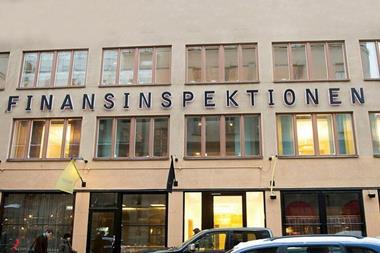The Thai property market has changed since the financial crisis in 1997 and has now become a more sophisticated and mature market. The crisis was partly caused by over-lending to the property sector, which resulted in over-building.
In 1998, the office market had a 40% vacancy rate and almost 50% of condominiums in the downtown market were vacant; construction stopped, leaving many buildings unfinished, and development activity came to a complete halt. Today the market has fully recovered in many sectors. The overall office vacancy rate is 16%, the CBD’s grade A office market has a vacancy rate of less than 10% and rents have increased by 23% year on year. In the downtown condominium market, vacancy is now below 10%.
Investors and developers initially returned to the market in the housing sector. However, they moved back to the condominium sector and now to offices. The market is very much in the early stages of a new cycle and has attracted significant interest from both local and overseas investors.
In the years immediately after the financial crisis, the focus of investors was on the acquisition of portfolios of non-performing loans. There was strong interest in asset acquisition but restrictions on foreign ownership and the slow pace of debt resolution limited the number of transactions. Property assets have slowly come on to the market and most have been acquired by local purchasers. The main focus is now on new development and on recommencing work on buildings where construction was halted after 1997.
For the first time in the Thai property market, we have seen the emergence of a local institutional investor in the form of the Government Pension Fund, which has acquired two grade A office buildings and one residential complex.
Local banks are now more cautious in their approach to lending in the property sector and more information is available to the market – from private sources and also from the newly established state-run Real Estate Information Centre, which is residential focused.
Thailand has also seen the development of a REIT structure. In the years following the financial crisis, legislation was passed to create various funds with tax shielding to encourage the disposal of non-performing loans and assets. This fund structure has now evolved into a publicly listed property fund structure.
Type 1 listed property funds are closed-end funds listed on the Stock Exchange of Thailand. The minimum capital at the time of listing is 500m baht (approximately €12m). There must be a minimum of 250 unit holders at IPO, which can be reduced to 10 when listed. No more than one third of the units can be held by the original property owner. At least 75% of the net asset value must be invested in income producing real estate assets and no less than 75% of the gross income must come from real estate rents. The dividend payout must be 90% of net profits.
The property fund structure, from a developer’s perspective, allows an exit route without the total disposal of an interest in a property. Previously, this was only possible through the creation of a strata title. There is also the possibility of generating income by managing properties owned by the fund. For investors, the publicly listed fund provides greater access to the property market with liquidity.
It provides an equity orientation to the property market with greater emphasis on transparency. A significant advantage is that funds are not subject to corporate income tax, providing investors with lower transaction costs and higher yields than direct investment in property. To date, five property funds have been listed.
The first signs of recovery were seen in 2000 in the housing market; the recovery spread to the condominium sector in 2002 and now over 16,000 new condominium units have been launched, achieving prices higher than pre-crisis levels. The office sector is one that stands out in 2005. It has seen steady demand growth, substantially reduced vacancy rates and rapidly rising rents. Vacancy rates among grade A offices in the CBD are now below 10% and rents have risen by 23% year-on-year. Also, there is limited current office construction, and the planned introduction of stricter development controls will further raise the value of existing stock.
The Bangkok hotel sector is also enjoying one of its best years, with 78% average occupancy rates for five-star properties in the first quarter of 2005 and average room rates of $140 (e117).
This market recovery has attracted the interest of both local and foreign investors who either want to develop or acquire properties for long-term investment or who want to develop and sell.
The majority of listed property companies are residential developers focusing on the single detached and townhouse market. A number of non-listed developers are also active in the downtown condominium sector.
There is no shortage of domestic capital and a healthy appetite for property as an investment also exists. Banks, however, with still fresh memories of the 1997 financial crisis, are cautious about lending to developers very early on in the cycle.
There has been strong foreign interest in this recovering market. However, overseas investors have recognised that there are few distressed assets available and in many cases they will be outbid by local investors who will accept a lower return. The focus now coming from overseas investors is on new developments, particularly in the downtown luxury condominium sector. There are still many restrictions on overseas investment in the Thai property market, particularly the restriction on foreigners owning land and the 30-year maximum length of a leasehold interest. The options open to overseas investors have largely been through equity investment in publicly listed property companies, joint ventures or through a Thai corporate structure.
Singapore investors have been the most active overseas players. Capital Land has formed a joint venture with TCC and has already launched and sold a luxury downtown condominium called Athenee Residence. HPL, CDL, Fraser and Neave have also made acquisitions or have developments in progress. GIC, the Government of Singapore’s investment arm, has made a significant equity investment in two of Thailand’s largest housing developers.
Almost all sectors of the Bangkok property market have growth potential. Currently, the most exciting sector is in offices, where there is little new supply in the pipeline and which will lead to continued rental growth. CB Richard Ellis expect that grade A office rents could grow by 20-25% in the next 12 months.
The early caution of domestic banks should be viewed positively, as the amount of new development will be restricted, reducing the risk of future oversupply. Foreign interest, particularly out of Singapore, is expected to continue growing. This will help the market to mature.
James Pitchon MRICS is an executive director of CB Richard Ellis Thailand












No comments yet